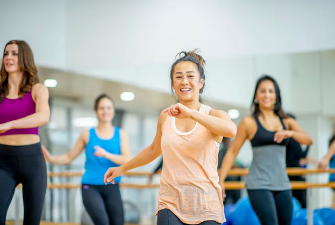Knee pain, whether due to excessive exercise, aging arthritis or sudden injury, can become a "troublemaker" in our daily lives. When many people experience knee pain, they are often at a loss and do not know how to take effective measures to relieve and treat it. This article will offer seven scientifically effective ways to quickly relieve knee pain from different perspectives, while also combining the latest research and expert advice to bring you practical solutions.

Knee pain, whether due to excessive exercise, aging arthritis or sudden injury, can become a "troublemaker" in our daily lives. When many people experience knee pain, they are often at a loss and do not know how to take effective measures to relieve and treat it. This article will offer seven scientifically effective ways to quickly relieve knee pain from different perspectives, while also combining the latest research and expert advice to bring you practical solutions.
Ice immediately: The first step to pain relief
Ice is a simple and effective way to relieve knee pain, especially for acute injuries and post-exercise inflammation. Ice can reduce local inflammation and swelling by constricting blood vessels and reducing blood flow. Specific operations are as follows:
How to ice: Wrap an ice pack in a towel and avoid direct contact with your skin to prevent frostbite. Apply ice for 15 minutes at a time, once an hour, frequently the first day of the most severe pain, and then 4 times a day.
When to ice: It is most effective after exercise or in the first 48 hours after an injury.
Tip: If the pain is accompanied by severe swelling or redness, timely ice can not only relieve the pain, but also reduce possible long-term damage.
Use knee pads: Provide extra protection for your knees
Knee pads can help stabilize the knee joint and reduce stress and friction during exercise, which in turn reduces pain. The following points should be considered when choosing knee pads:
Choose the right knee pads: Choose knee pads with shock-absorbing features according to your needs, and consult your rehabilitation or orthopedic doctor to make sure you choose the right model.
Wear time: Wear knee pads during sports, climbing stairs, or other activities that may strain the knee.
Expert advice: Knee pads are not the only way to cure pain, but they can effectively prevent the aggravation of pain while reducing the burden.

Moderate use of painkillers: Relieve pain but not too much
For short-term pain relief, over-the-counter medications such as ibuprofen or naproxen can be used. These drugs help reduce inflammation and relieve pain. However, the following points should be noted when using painkillers:
Principles of use: Follow the instructions of the drug and avoid excessive use, especially for people with gastrointestinal problems or liver and kidney dysfunction.
Timing of medication use: Short-term use of painkillers can be considered when pain interferes with daily activities, but prolonged or excessive reliance on medication is not the best option.
Caution: Medication only relieves symptoms and does not fundamentally solve the underlying problem of knee pain, and is recommended in combination with other treatments.
Build muscle strength: Improve knee load from the root
Strong thigh and calf muscles can effectively support the knee and reduce the pressure on the joint, thus relieving pain. Here are some tips for building muscle strength:
Targeted training: Strength training of the front muscles of the thigh (quadriceps) and the back muscles (leg flexors), such as squats, leg lifts, etc.
Exercise control: Avoid high-intensity and high-load exercise, and gradually increase the intensity of training to prevent excessive injury.
The science: Studies show that moderate strength training can significantly reduce knee pain and improve knee function.
Proper rest and knee elevation: reduce pressure and edema
Adequate rest is an important means of relieving knee pain, especially if the pain is accompanied by edema. Here are some effective breaks:
Rest strategy: Reduce exercise and weight bearing, especially stair climbing, long standing and other activities.
Raise your knees: Sleep with pillows under your knees to help reduce edema and improve circulation.
Advice: Arrange rest time reasonably and avoid long-term immobility or complete inactivity, which can lead to muscle atrophy and joint stiffness.
Hot compress and physiotherapy: promote blood circulation
Hot compresses and physical therapy can help improve blood circulation to the knee area and relieve muscle stiffness and pain. Common hot compress methods include:
Hot compress: Use a hot water bag or a heated wet towel for 15-20 minutes at a time, 2-3 times a day.
Physical therapy: including ultrasound, laser therapy, etc., can be carried out under the guidance of a professional physical therapist.
Experts recommend that hot compresses work best for chronic pain and muscle stiffness, while ice should be used for acute injuries.
Healthy eating and weight management: Protect your knees from the inside out
A healthy diet and sound weight management are essential for knee health:
Dietary advice: Eat foods rich in anti-inflammatory ingredients, such as fish, nuts, vegetables and fruits. Avoid foods high in fat and sugar, which may increase the risk of arthritis.
Weight management: Control your weight, reduce the burden on your knees, and avoid joint wear caused by obesity.
The data back it up: Studies show that for every 1kg increase in body weight, the pressure on the knee increases by 4kg, so weight management is crucial to preventing and relieving knee pain.
Knee pain can come from a variety of factors, including sports injuries, arthritis, and chronic stress. The above seven methods provide quick and effective means of relief, but the fundamental solution to the pain problem needs to choose the appropriate treatment plan according to the specific situation. If knee pain persists or seriously affects daily life, it is recommended to see a doctor in time to obtain professional diagnosis and treatment.
Through scientific and rational self-management and professional treatment, you can effectively relieve knee pain and regain a comfortable life. Remember, protect your knees and do it now!


